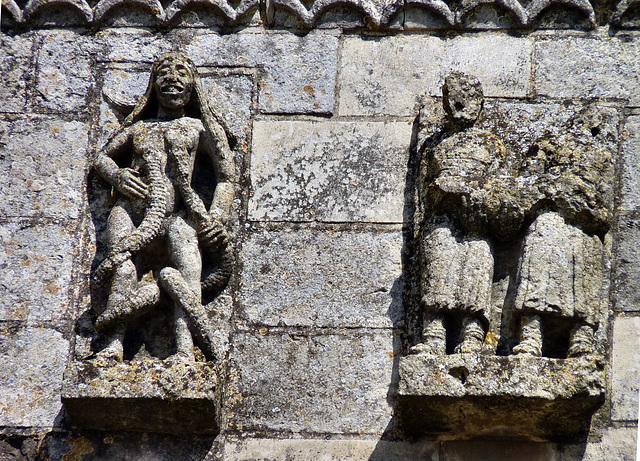Saint-Jouin-de-Marnes - Abbey Church
Saint-Jouin-de-Marnes - Abbey Church
Saint-Jouin-de-Marnes - Abbey Church
Saint-Jouin-de-Marnes - Abbey Church
Saint-Jouin-de-Marnes - Abbey Church
Saint-Jouin-de-Marnes - Abbey Church
Saint-Jouin-de-Marnes - Abbey Church
Saint-Jouin-de-Marnes - Abbey Church
Saint-Jouin-de-Marnes - Abbey Church
Saint-Jouin-de-Marnes - Abbey Church
Saint-Jouin-de-Marnes - Abbey Church
Saint-Jouin-de-Marnes - Abbey Church
Saint-Jouin-de-Marnes - Abbey Church
Saint-Jouin-de-Marnes - Abbey Church
Saint-Jouin-de-Marnes - Abbey Church
Saint-Jouin-de-Marnes - Abbey Church
Saint-Jouin-de-Marnes - Abbey Church
Saint-Jouin-de-Marnes - Abbey Church
Saint-Jouin-de-Marnes - Abbey Church
Saint-Jouin-de-Marnes - Abbey Church
Saint-Jouin-de-Marnes - Abbey Church
Marnes - Parish Church
Marnes - Parish Church
Saint-Jouin-de-Marnes - Abbey Church
Saint-Jouin-de-Marnes - Abbey Church
Saint-Jouin-de-Marnes - Abbey Church
Saint-Jouin-de-Marnes - Abbey Church
Saint-Jouin-de-Marnes - Abbey Church
Saint-Jouin-de-Marnes - Abbey Church
Airvault - Pont du Vernay
Airvault - Saint-Pierre
Airvault - Saint-Pierre
Airvault - Saint-Pierre
Airvault - Saint-Pierre
Airvault - Saint-Pierre
Airvault - Saint-Pierre
Airvault - Saint-Pierre
Airvault - Saint-Pierre
Airvault - Saint-Pierre
Airvault - Saint-Pierre
Airvault - Saint-Pierre
Airvault - Saint-Pierre
Airvault - Saint-Pierre
Airvault - Saint-Pierre
Airvault - Saint-Pierre
Location
See also...
Keywords
Authorizations, license
-
Visible by: Everyone -
All rights reserved
-
149 visits
Saint-Jouin-de-Marnes - Abbey Church


The former Abbey Church in the village of Saint-Jouin-de-Marnes, that now serves the parish, has a total length of 72,30 meters and all of the 600 people living in Saint-Jouin-de-Marnes would easily find a chair inside. The church is a gem of poitevin architecture.
When Prosper Mérimée visited Saint-Jouin-de-Marnes mid 19th century, the church were in a very bad state. Photograps taken some decades later show, that the facade was ruined. Prosper Mérimée efforts started a reconstruction and renovation process, that finally saved the structure. Today the facade is complete again.
Under a long frieze of depicting pilgrims approaching Virgin Mary (see previous upload) are many large sculptures. Most of them are damaged, as during the Wars of Religion the monastery got attacked, plundered and pilaged.
Here are two very weathered figures (pilgrims?) and a massive Luxuria.
The history of this abbey dates back to the 4th century, when Jovinus (French "Jouin") in 342 founded a small oratory near a place named Ensio. Not much is known about Jovinus. He may have been borne in a wealthy family. It is believed, that his was brother of Saint Maximin, the first Bishop of Treves.
The oratory developed into a monastery over the next decades, that was the second monastery existing in France, just after Saint-Martin-de-Ligugé, founded by St. Martin of Tours himself in 361.
During the 7th century, the bishop of Nantes, Felix, asked Martin de Vertou to christianise the area. This mission led him to Ension where he imposed Saint Benoit’s rule.
The small monastery was never threatend by the Normanic raids, as it was far away from large rivers. So it could offer refuge to the monks of "Saint Martin de Vertou", who left their monastery and brought the relics of their founding Saint, in 843.
The erection of the Abbey Church took place between 1095 and 1130, when an old Roman road, known under the name of "Saint Hilaire’s Way" was followed by pilgrims on their way to Santiago. At that time the road was one of the many that belonged all to the "Via Turonensis".
Monastic life was ended by the French Revolution in 1789. The Abbey was sold as national property. The church got preserved and serves as a parish church since 1795. Parts of the former conventual buildings now belong to a privatly owned farm, next to the church.
When Prosper Mérimée visited Saint-Jouin-de-Marnes mid 19th century, the church were in a very bad state. Photograps taken some decades later show, that the facade was ruined. Prosper Mérimée efforts started a reconstruction and renovation process, that finally saved the structure. Today the facade is complete again.
Under a long frieze of depicting pilgrims approaching Virgin Mary (see previous upload) are many large sculptures. Most of them are damaged, as during the Wars of Religion the monastery got attacked, plundered and pilaged.
Here are two very weathered figures (pilgrims?) and a massive Luxuria.
The history of this abbey dates back to the 4th century, when Jovinus (French "Jouin") in 342 founded a small oratory near a place named Ensio. Not much is known about Jovinus. He may have been borne in a wealthy family. It is believed, that his was brother of Saint Maximin, the first Bishop of Treves.
The oratory developed into a monastery over the next decades, that was the second monastery existing in France, just after Saint-Martin-de-Ligugé, founded by St. Martin of Tours himself in 361.
During the 7th century, the bishop of Nantes, Felix, asked Martin de Vertou to christianise the area. This mission led him to Ension where he imposed Saint Benoit’s rule.
The small monastery was never threatend by the Normanic raids, as it was far away from large rivers. So it could offer refuge to the monks of "Saint Martin de Vertou", who left their monastery and brought the relics of their founding Saint, in 843.
The erection of the Abbey Church took place between 1095 and 1130, when an old Roman road, known under the name of "Saint Hilaire’s Way" was followed by pilgrims on their way to Santiago. At that time the road was one of the many that belonged all to the "Via Turonensis".
Monastic life was ended by the French Revolution in 1789. The Abbey was sold as national property. The church got preserved and serves as a parish church since 1795. Parts of the former conventual buildings now belong to a privatly owned farm, next to the church.
- Keyboard shortcuts:
Jump to top
RSS feed- Latest comments - Subscribe to the comment feeds of this photo
- ipernity © 2007-2024
- Help & Contact
|
Club news
|
About ipernity
|
History |
ipernity Club & Prices |
Guide of good conduct
Donate | Group guidelines | Privacy policy | Terms of use | Statutes | In memoria -
Facebook
Twitter

Sign-in to write a comment.